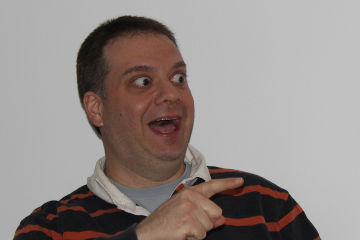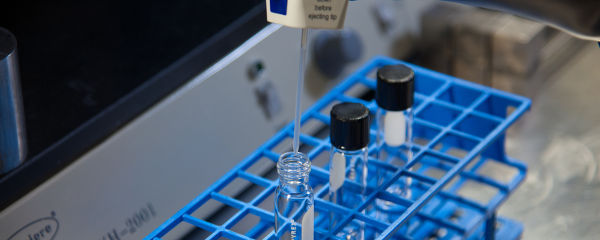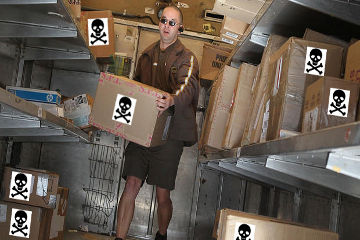What I’ve Learned:
“DNA origami: when you’re done with your genes, fold ’em up.”
You may be familiar with origami, the ancient Japanese art of paper folding. In modern Western society, origami usually pops up in one of three places:
- fancy folded paper in art classes I’m not talented enough to get into
- fancy folded napkins in restaurants I can’t get reservations for
- fancy folded towels in hotels I can’t afford
Needless to say, I don’t have a lot of origami experience.
However. Clever scientists — who presumably can’t get into swanky hotels or eateries, either — have recently found something else to fold: DNA.
Like its predecessor, DNA origami started mostly as an art project. Biologists knew that the four bases in DNA — represented by the letters A, C, G and T — pair up in a very specific way (A with T and C with G) to form the double helix structure Watson and Crick were all aflutter about back in the 1950s. They also found that certain strings of bases affected the physical shape of the DNA molecule, making bends, kinks and folds in the structure. With a few careful adjustments, they thought, bits of DNA could become their personal nanoscale genetic-coded Lego set.
So they built some stuff. DNA origami isn’t quite a full-on Lego kit — you can’t make a Millennium Falcon or model Taj Mahal out of genetic material, yet — but the early attempts were still pretty impressive. In 2006, a group managed to assemble DNA triangles, smiley faces, tiny maps, banners, snowflakes and more. So if DNA origami wasn’t exactly DNA Lego then, maybe at least it was DNA Play-Doh.
Since then, the technology has advanced a bit further — and scientists aren’t playing around any more. They’ve got CAD (computer-assisted design) software to design their shapes and calculate molecular bend angles. They’ve also ramped up to try some pretty useful applications. Many of these involve using folded-up DNA structures to deliver drugs like cancer treatments directly into malignant cells. Or basically, using DNA origami as nano-teeny FedEx drivers.
(Assuming FedEx drivers are in the habit of delivering poison to disreputable households.
Which maybe they do. But that sounds like more of a UPS thing.)
There’s still more to do with DNA origami, though. By using long strands of sequence along with complementary base-pairing “staple” strands to reshape, twist and build bigger structures, much more may soon be possible. Last fall, researchers built the largest DNA origami structure yet, roughly seven times larger than anything previously designed — and it mostly self-assembles. DNA-based nanocomputers — and even nanorobots — are also in the works, and may be next.
And that’s all great and everything. DNA origami is cool. I just want somebody to teach me how to fold one of those stupid napkin swans.



